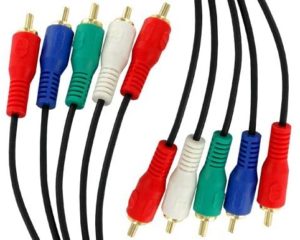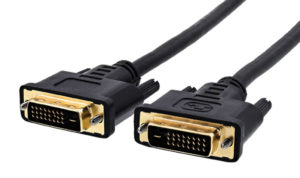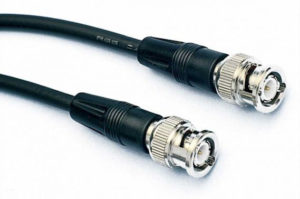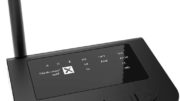High-definition content protection is a part of virtually any digital video signal. It’s a part of your streaming box, your satellite or cable box, and your game system. It’s even used in your computer. This technology has one, and only one, purpose, and it’s not what you think it is. Before I explain further, let’s take a look back at how we got here.
Early high-definition video
For the sake of argument, let’s define high-definition video as anything higher than standard definition. In other words, something with a resolution of greater than 720×480. By that standard, we’ve had high-definition video since the 1980s, when we first saw 800×600 video screens.
For the first two decades of high definition, it was pretty easy to deal with. Analog signals like those through a VGA connector could be recorded if you had the right hardware. It was even easier with first-generation HDTV technologies.

Component video used five RCA connectors, three for video and two for audio. The quality wasn’t anywhere near what we see today, but it was easy to distribute video and just as easy to record it if you had the right connection.

DVI was the first digital interface for HD audio and video. While the quality was excellent, the connectors were delicate and expensive. There were also several different incompatible signal types that used a DVI cable, and you could be guaranteed that at some point you would have a problem with that.

SDI, the only technology of these three that’s still in common use, sends full-bandwidth uncompressed video through a coaxial cable. It’s used in commercial video applications but because of complex agreements, isn’t part of consumer video gear.
What all the above technologies have in common
It’s simple: If you have the right equipment, you can make clean, pristine copies of whatever video or audio is going through it. And that very thing gave so many ulcers to so many executives that something had to be done.
HDMI to the “rescue”

The HDMI cable is a popular, almost ubiquitous way to transfer digital video and audio from one device to another. It’s consumer-friendly, easy to use, and the cables are fairly cheap.
The real secret of HDMI is that it’s designed from the outset to use high-definition content protection. This increasingly advanced scheme allows devices to encrypt and decrypt video on the fly, stopping the average person from making pristine digital recordings and putting them out there on the internet for everyone to use.
Consumers loved HDMI from the start but few were really aware of the content protection angle until much later.
Why we should get rid of HDCP
It’s time for HDCP to move on. It’s time for people to have the simple joy of being able to record something and not worry about confusing workarounds. And here’s why.
1. HDCP is pretty easily fooled.
The only people who really suffer with HDCP are the people who want to. Not only has every version of HDCP been cracked at some point, it’s fairly easy to bypass. Look around and you’ll find plenty of places that point you to HDMI splitters that allow you to bypass HDCP. (We don’t sell them at Solid Signal, but it won’t take you long to find someone who does.) HDCP isn’t protecting anything.
2. HDCP makes a few people feel good and a lot of people feel bad. And neither group really has it right.
HDCP exists because big content providers (think Disney, for example) are afraid that without it, you’ll make unlimited digital copies of their stuff. On the other hand, plenty of parents are frustrated because the content they want (again, think Disney) is hard to copy.
Both groups have it wrong. It’s easy enough to get online content cheaply. Pay $6 for Disney+ and you can download a ton of it and keep it for at least a month. No one is clamoring to create an underground economy for bootleg copies of The Little Mermaid. They never were.
3. HDCP just makes things work worse.
Hardware makers have spent billions of dollars collectively on making sure that HDCP works on their devices. It’s less of a problem today than it was, because of extensive pre-release testing. But there are still a lot of problems. New equipment won’t work with old equipment, some cables will work when others don’t. It’s a big mess. And it doesn’t benefit anyone.
We have moved past ownership of our media…
…so there’s really no reason for HDCP. People are accustomed to paying a fair price for a large amount of content whenever they need it. The content itself is encrypted, so the connection doesn’t need to be. No one is, or ever was, clamoring to make all these digital copies that studios feared.
HDCP is the answer to a question that no one wanted to ask. It’s time for it to go away. What do you think?





